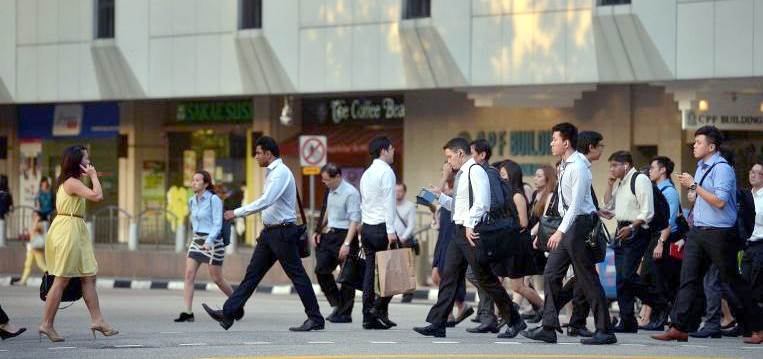Since employment shrank by 258,700 in the last 12 months – how can “overall job prospects may be improving”?
I refer to the article “Q3 labour report shows rise in job seekers unemployed for 25 weeks or more” (Straits Times, Dec 13).
It states that “Overall job prospects may be improving, but a small – though growing – group of residents is being left in the lurch.
These job-seekers are finding it hard to find new positions even after being unemployed for 25 weeks or more, the latest labour report released on Wednesday (Dec 13) showed.
Observers said that ongoing restructuring continues to pose a challenge, as flagged in the labour report for the third quarter of 2017, even though the cyclical recovery in the economy has lifted job prospects.
DBS economist Irvin Seah said that the upward trend in the long-term unemployment rate for Singaporean and permanent residents in the past two years is a matter of concern.
It rose to 0.8 per cent in September, up from 0.7 per cent in June, according to figures released on Wednesday (Dec 13) by the Ministry of Manpower (MOM). This was similar to the figure in September last year. In contrast, the rate hovered between 0.5 to 0.6 per cent in 2014 and 2015.
This rate measures the proportion of the resident labour force that has been unemployed for at least 25 weeks.”
How on earth did we come to the conclusion that “Overall job prospects may be improving, but a small – though growing – group of residents is being left in the lurch”?
As to “However, total employment in the first three quarters of the year contracted by 21,400, excluding foreign domestic workers. The bulk of those who left were work permit holders from in construction and manufacturing, said MOM.
Total employment sat at 3,412,000 as of September, a drop from 3,670,700 in September last year (2016)” – this means that total employment has contracted by a whopping 258,700 (3,670,700 – 3,412,000) in the last 12 months.
Is this the largest contraction in total employment in any 12-month period ever, in the history of Singapore?
With regard to “MOM said that local employment is expected to continue to grow next year, in line with the Ministry of Trade and Industry’s 2018 GDP growth forecast of 1.5 per cent to 3.5 per cent. But it will remain uneven across sectors.
“Job-skills mismatch will continue to be a growing challenge due to on-going economic restructuring and shifts in composition of the resident labour force,” said MOM” – why are we talking about “local employment is expected to continue to grow next year” – without any mention of whether this year’s local employment is expected to grow or shrink?
In this connection, why is the Labour Market Report 3rd Quarter silent on whether local employment grew or shrank in the last 12 months – when total employment in the last 12 months shrank by a whopping 258,700 (locals plus foreigners)?
In respect of “Overall, the unemployment rate in September remained at 2.2 per cent after accounting for seasonal variations.
The unemployment rate for Singaporeans was 3.2 per cent in September, down from 3.3 per cent in June and 3.5 per cent in March.
For residents – Singapore citizens and permanent residents combined – the rate remained unchanged from the previous quarter at 3.1 per cent” – what is the employment growth or contraction for Singaporeans, instead of locals?
Leong Sze Hian
